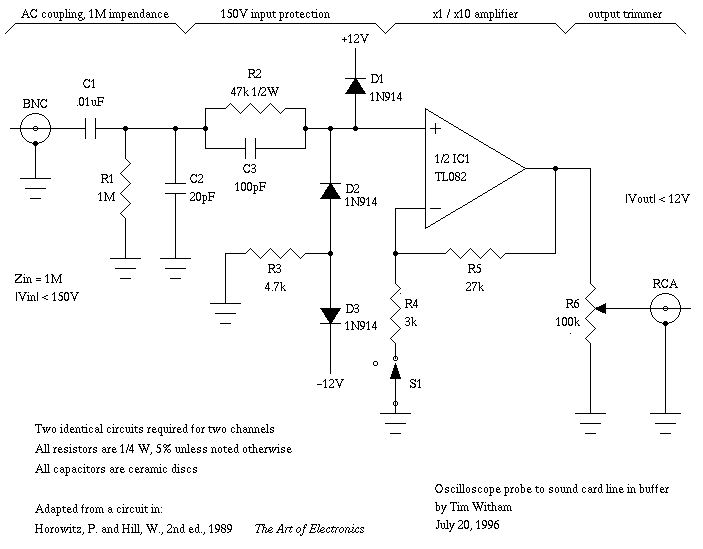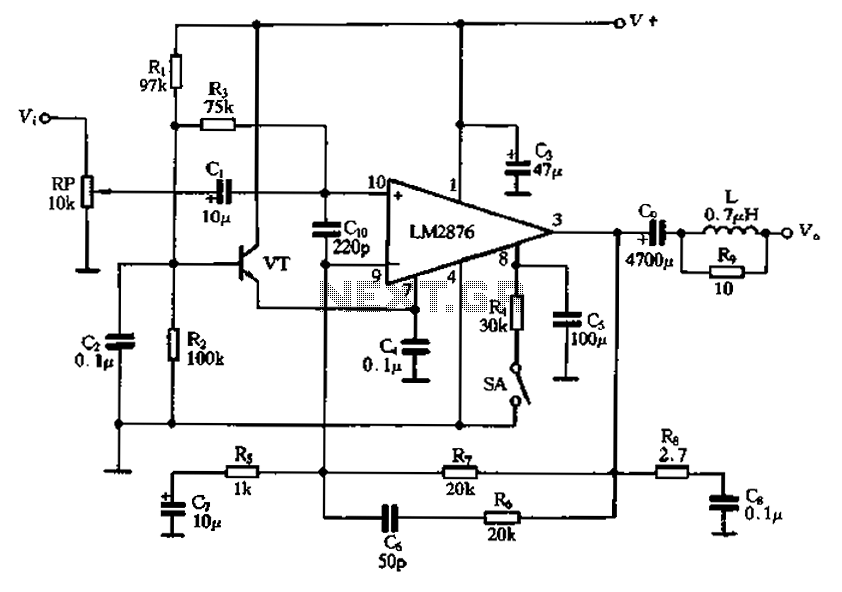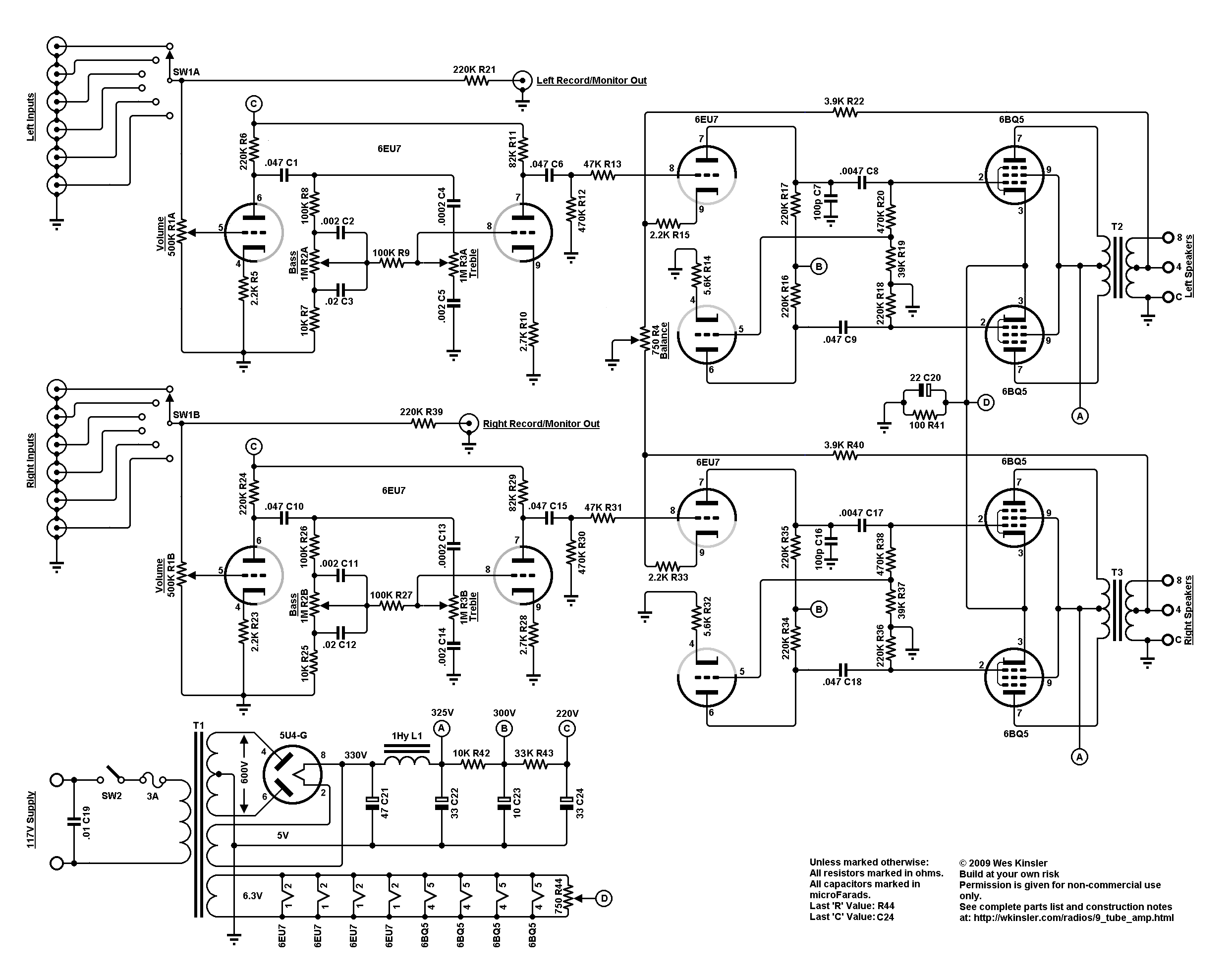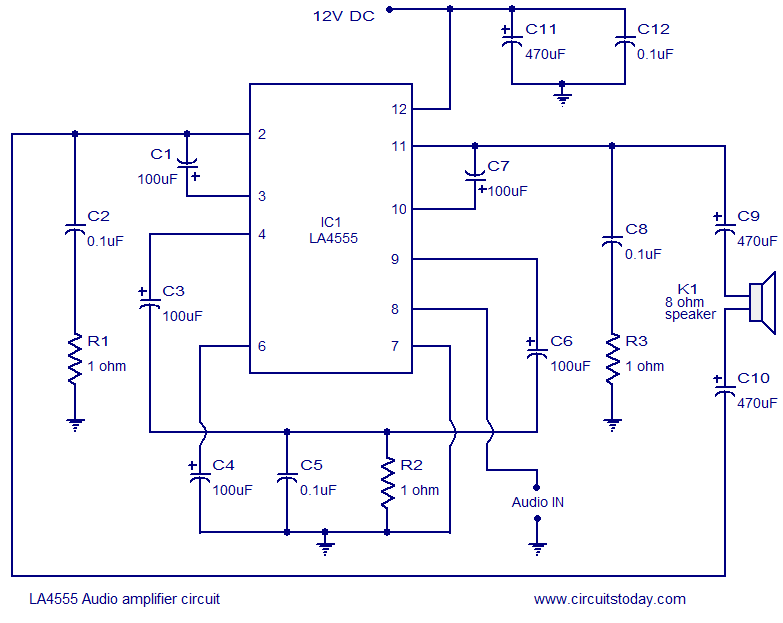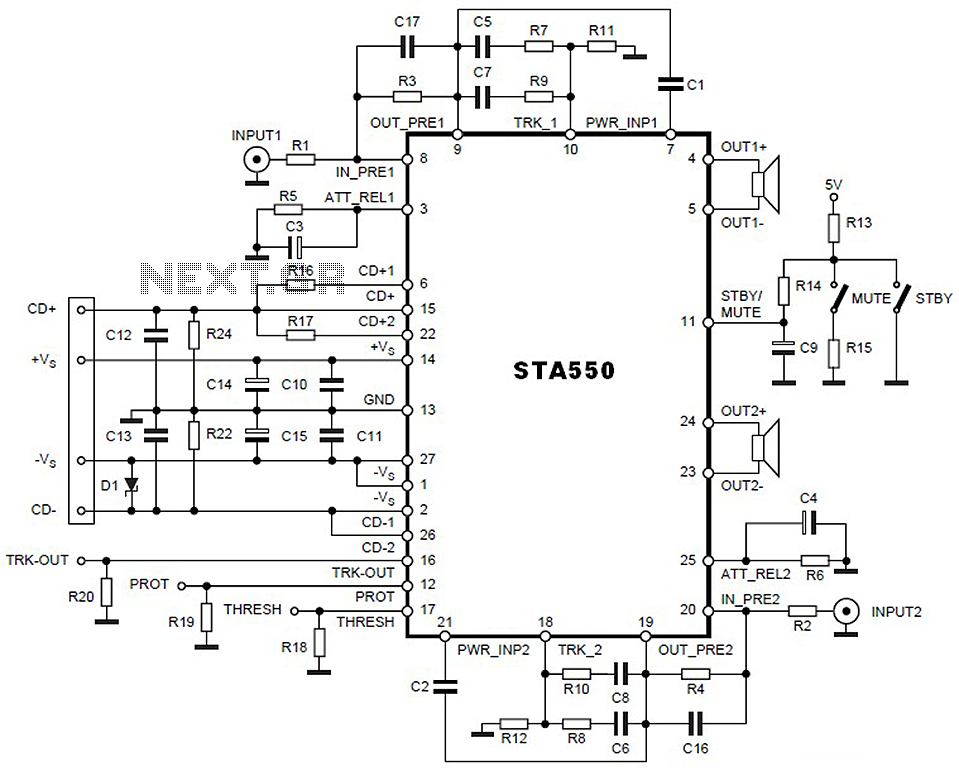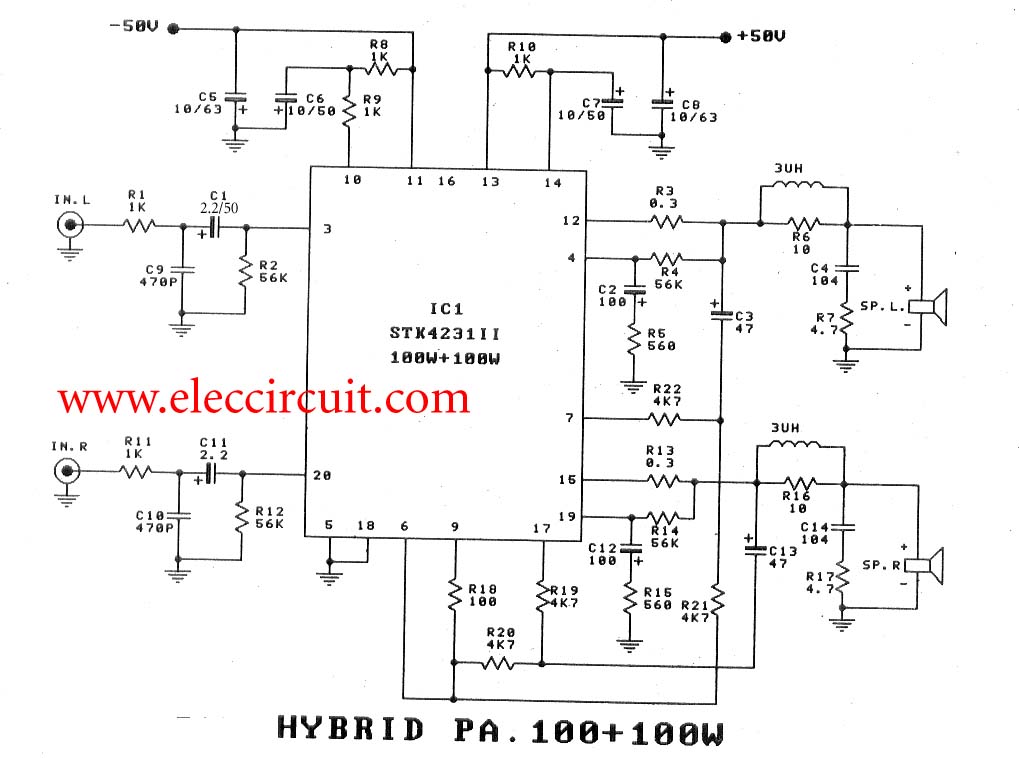
Uhf Tv-Line Amplifier
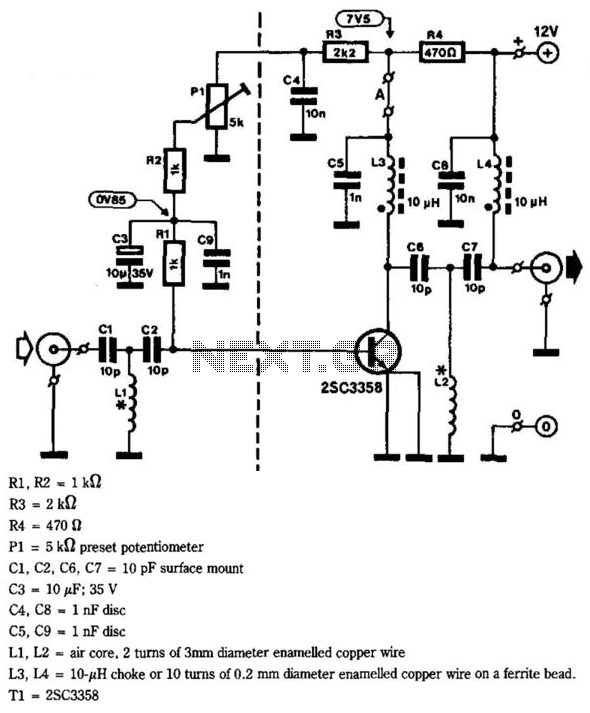
This circuit provides a gain of 10 to 15 dB from 400 to 850 MHz, making it particularly effective in scenarios where the television signal is weak. Additionally, the filters can be customized to meet individual user requirements. Construction is straightforward when utilizing the pre-fabricated PCB shown on the following page. The tracks on the PCB should be tinned or silvered to ensure optimal performance and longevity. The central opening of the board is designed to accommodate the transistor, which features two emitter pins that must both be connected to ground. The PCB is divided into two sections by a small piece of tin plate, which includes a cut-out for the transistor. Input and output terminals are constructed from small cable clamps along with M3 nuts and bolts. One side of the disc capacitors C4, C5, C8, and C9 is directly soldered to the board. The input and output capacitors, C1/C2 and C6/C7 respectively, are of the surface-mount type. Capacitors C1/C2 and inductor L1 form the input filter, while capacitors C6/C7 and inductor L2 form the output filter. It may be necessary to reduce the capacitor values to 3.9 pF to achieve the desired frequency range. The amplifier can be enclosed in a watertight case and mounted near the antenna at the top of the mast if applicable. Power is supplied by a simple stabilized 12-V source, such as a mains adapter with a 78L12 regulator, which can be kept indoors. The amplifier can be powered through the coaxial feeder cable, requiring the insertion of a 10- to 100-ohm choke in the supply line. Calibration of the amplifier is simple; set the preset potentiometer PI to the midpoint of its travel and adjust for the best picture quality. Typically, the collector current of the transistor ranges from 5 to 15 mA, which can be verified by temporarily replacing jump lead A with an appropriate meter.
PARTS LIST:
- R1, R2 = 1 kΩ
- R3 = 2 kΩ
- R4 = 470 Ω
- PI = 5 kΩ preset potentiometer
- C1, C2, C6, C7 = 10 pF surface mount
- C3 = 10 µF, 35 V
- C4, C8 = 1 nF disc
- C5, C9 = 1 nF disc
- L1, L2 = air core, 2 turns of 3 mm diameter enameled copper wire
- L3, L4 = 10-ohm choke or 10 turns of 0.2 mm diameter enameled copper wire on a ferrite bead
- T1 = 2SC3358
This circuit is designed for high-frequency applications, particularly in the VHF/UHF range, making it suitable for television signal amplification. The gain specification of 10 to 15 dB is critical for enhancing weak signals, ensuring clearer reception. The use of surface-mount capacitors minimizes board space and allows for a compact design, while the air core inductors provide low-loss filtering characteristics.
The PCB layout should be carefully considered to minimize parasitic inductance and capacitance, which can adversely affect performance at high frequencies. The cut-out for the transistor is essential for proper thermal management, as the device may generate heat during operation. Ground connections for the emitter pins are vital for stability and to reduce noise in the amplified signal.
The use of a watertight enclosure is recommended for outdoor installations, protecting the circuit from environmental factors and ensuring reliability. The power supply design, utilizing a 78L12 regulator, provides a stable voltage with minimal ripple, which is crucial for consistent performance. The choke in the power line helps prevent RF interference from affecting the power supply, maintaining the integrity of the amplified signal.
Calibration procedures should be followed to ensure optimal performance. Adjusting the preset potentiometer PI allows for fine-tuning of the amplifier's gain, directly impacting the quality of the output signal. The collector current measurement provides a means to verify the operational state of the transistor, ensuring it functions within the specified range for effective amplification.
Overall, this circuit design is an efficient solution for enhancing television reception in areas with weak signals, combining simplicity in construction with effective performance characteristics. This circuit offers 10- to 15-dB gain from 400 to 850 MHz and is therefore eminently suitable for situations where th e television signal is weak. Moreover, the filters can be adapted to the individual needs of users. Construction is simplicity itself if the ready-made PC board shown on the next page is used. The tracks should be tinned or silvered for optimum performance and long life. The opening at the center of the board is intended to accommodate the transistor. This device has two emitter pins, both of which should be connected to ground. The drawings show that the board is divided into two by a small piece of tin plate, which should have a small cut-out for the transistor. The input and output terminals are made from small cable clamps and M3 nuts and bolts. One side of disc capacitors C4, C5, C8, and C9 is soldered direct to the board. Input and output capacitors, C1/C2 and C6/C7 respectively are surface-mount types. C1/C2/L1 form an input filter and C6/C7/L2 form an output filter. The value of the capacitors might have to be lowered to 3.9 pF to obtain the correct frequency range.
The amplifier can be housed in a watertight case and then mounted near the antenna at the top of the mast (if used). The power is obtained from a simple stabilized 12-V supply: a mains adapter with a 78L12 will do nicely.
This can be kept indoors, of course. The amplifier can be powered via the coaxial feeder cable, for which purpose a 10- to 100- choke is inserted in the supply line. Calibrating the amplifier is straightforward: set PI to the center of its travel and then adjust it for optimum picture quality.
In practice, the collector current of the transistor is then 5 to 15 mA. This may be checked by temporarily replacing jump lead A by one suitable meter. PARTS LIST Rl, R2 = 1 KOhmhm R3 = 2 ki2 R4 = 470 PI = 5 preset potentiometer CI, C2, C6, C7 = 10 pF surface mount C3 = 10 -, 35 V C4, C8 = 1 nF disc C5, C9 « 1 nF disc LI, L2 = air core, 2 turns of 3mm diameter enamelled copper wire L3, L4 = 10- choke or 10 turns of 0.2 mm diameter enamelled copper wire on a ferrite bead. T1 = 2SC3358 🔗 External reference
PARTS LIST:
- R1, R2 = 1 kΩ
- R3 = 2 kΩ
- R4 = 470 Ω
- PI = 5 kΩ preset potentiometer
- C1, C2, C6, C7 = 10 pF surface mount
- C3 = 10 µF, 35 V
- C4, C8 = 1 nF disc
- C5, C9 = 1 nF disc
- L1, L2 = air core, 2 turns of 3 mm diameter enameled copper wire
- L3, L4 = 10-ohm choke or 10 turns of 0.2 mm diameter enameled copper wire on a ferrite bead
- T1 = 2SC3358
This circuit is designed for high-frequency applications, particularly in the VHF/UHF range, making it suitable for television signal amplification. The gain specification of 10 to 15 dB is critical for enhancing weak signals, ensuring clearer reception. The use of surface-mount capacitors minimizes board space and allows for a compact design, while the air core inductors provide low-loss filtering characteristics.
The PCB layout should be carefully considered to minimize parasitic inductance and capacitance, which can adversely affect performance at high frequencies. The cut-out for the transistor is essential for proper thermal management, as the device may generate heat during operation. Ground connections for the emitter pins are vital for stability and to reduce noise in the amplified signal.
The use of a watertight enclosure is recommended for outdoor installations, protecting the circuit from environmental factors and ensuring reliability. The power supply design, utilizing a 78L12 regulator, provides a stable voltage with minimal ripple, which is crucial for consistent performance. The choke in the power line helps prevent RF interference from affecting the power supply, maintaining the integrity of the amplified signal.
Calibration procedures should be followed to ensure optimal performance. Adjusting the preset potentiometer PI allows for fine-tuning of the amplifier's gain, directly impacting the quality of the output signal. The collector current measurement provides a means to verify the operational state of the transistor, ensuring it functions within the specified range for effective amplification.
Overall, this circuit design is an efficient solution for enhancing television reception in areas with weak signals, combining simplicity in construction with effective performance characteristics. This circuit offers 10- to 15-dB gain from 400 to 850 MHz and is therefore eminently suitable for situations where th e television signal is weak. Moreover, the filters can be adapted to the individual needs of users. Construction is simplicity itself if the ready-made PC board shown on the next page is used. The tracks should be tinned or silvered for optimum performance and long life. The opening at the center of the board is intended to accommodate the transistor. This device has two emitter pins, both of which should be connected to ground. The drawings show that the board is divided into two by a small piece of tin plate, which should have a small cut-out for the transistor. The input and output terminals are made from small cable clamps and M3 nuts and bolts. One side of disc capacitors C4, C5, C8, and C9 is soldered direct to the board. Input and output capacitors, C1/C2 and C6/C7 respectively are surface-mount types. C1/C2/L1 form an input filter and C6/C7/L2 form an output filter. The value of the capacitors might have to be lowered to 3.9 pF to obtain the correct frequency range.
The amplifier can be housed in a watertight case and then mounted near the antenna at the top of the mast (if used). The power is obtained from a simple stabilized 12-V supply: a mains adapter with a 78L12 will do nicely.
This can be kept indoors, of course. The amplifier can be powered via the coaxial feeder cable, for which purpose a 10- to 100- choke is inserted in the supply line. Calibrating the amplifier is straightforward: set PI to the center of its travel and then adjust it for optimum picture quality.
In practice, the collector current of the transistor is then 5 to 15 mA. This may be checked by temporarily replacing jump lead A by one suitable meter. PARTS LIST Rl, R2 = 1 KOhmhm R3 = 2 ki2 R4 = 470 PI = 5 preset potentiometer CI, C2, C6, C7 = 10 pF surface mount C3 = 10 -, 35 V C4, C8 = 1 nF disc C5, C9 « 1 nF disc LI, L2 = air core, 2 turns of 3mm diameter enamelled copper wire L3, L4 = 10- choke or 10 turns of 0.2 mm diameter enamelled copper wire on a ferrite bead. T1 = 2SC3358 🔗 External reference
